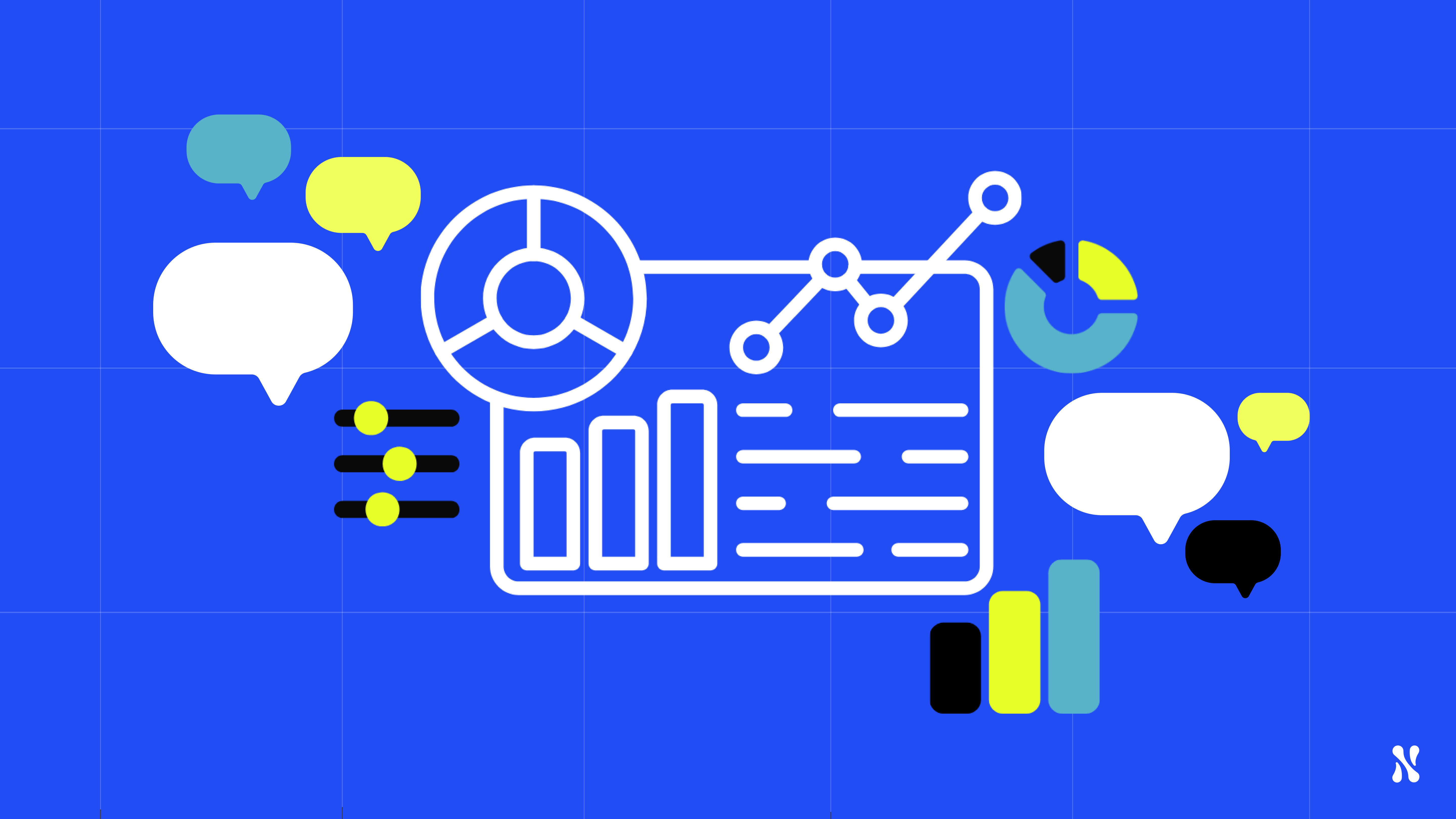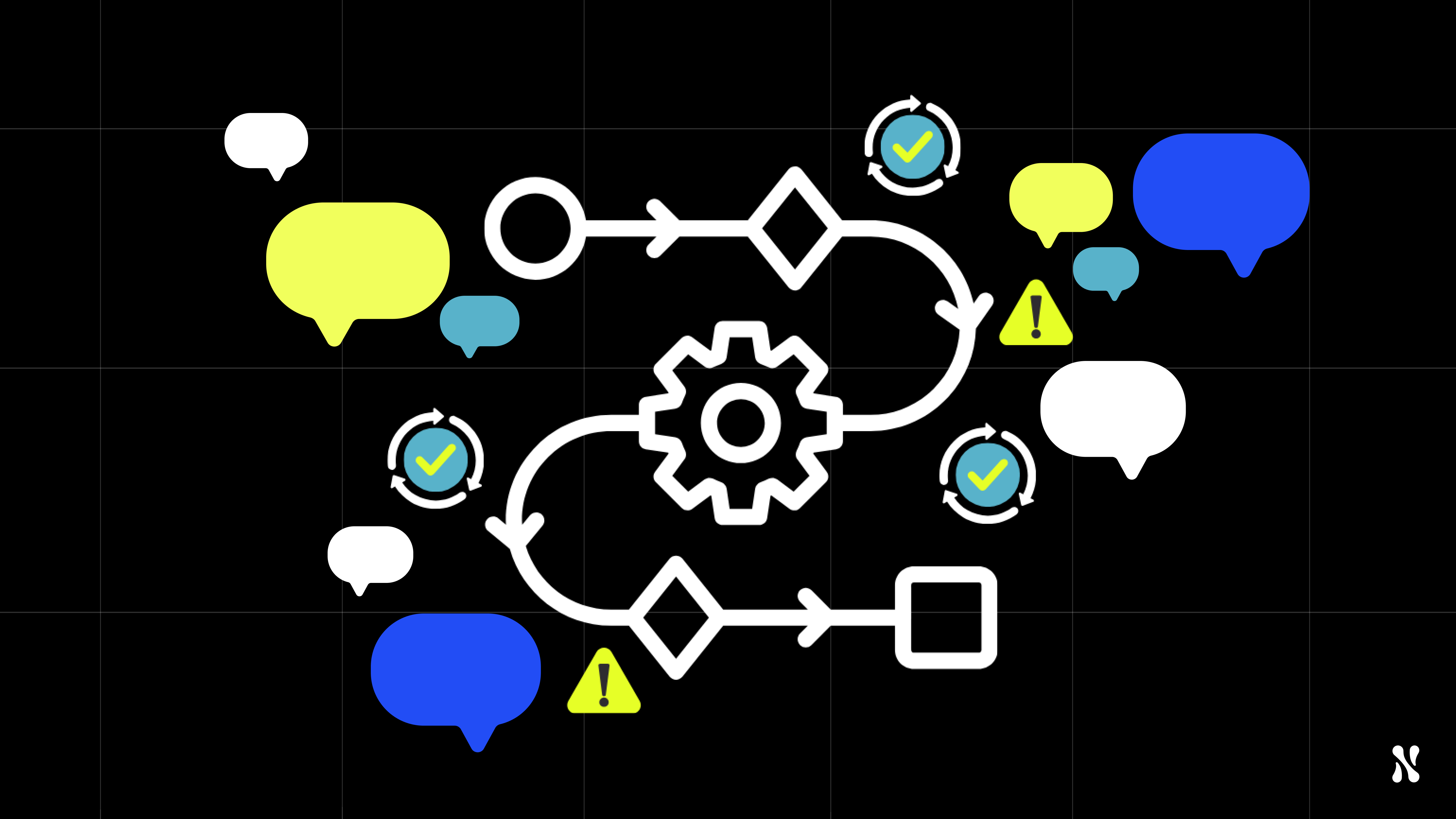When Anthropic published their Claude usage report, it revealed unexpected patterns about how people actually use AI. The data showed gaps between what users wanted and what the model delivered, creating a roadmap for improvement that the tech world couldn't ignore.
Companies using GenAI internally need the same visibility.
Most organizations think about GenAI analytics as an engineering problem. Token usage, model latency, error rates. These metrics matter for system health, but they miss the bigger picture. GenAI conversations contain intelligence that every department can use.
The absurd analogy
Imagine your web team builds a company website but refuses to share Google Analytics with other departments. HR can't see engagement on the careers page. Marketing can't access visitor behavior data. Sales can't identify which content converts prospects. The website exists, it loads quickly, but nobody outside IT knows if it actually works for the business.
This sounds absurd because it is. Yet this is exactly what most companies do with GenAI analytics.
The AI team tracks tokens and response times while conversation data that could transform entire departments sits unused in logs. Marketing teams guess what customers want instead of reading it directly in chat transcripts or waiting for a thumb down. HR surveys employees about policy clarity while copilot conversations reveal exactly which policies confuse people most.
Your GenAI data reveals more than you think
GenAI analytics work like your company's own AI economic report. Every conversation contains signals about user needs, business processes, and organizational gaps. Unlike system observability, which tracks how your models perform, user analytics reveal what people actually want.
Just as OpenAI and Anthropic created their own AI economic indexes by analyzing millions of conversations (we dive deep into what companies can learn from these reports here), your internal GenAI conversations contain similar strategic intelligence about your organization.
Consider what happens when you analyze conversation patterns across an entire organization. The sales team discovers common objections buried in support chat logs. Operations spots recurring process bottlenecks in employee questions. HR notices policy confusion showing up in copilot conversations.
These insights sit in your GenAI data right now. Most companies collect the conversations but never analyze them for cross-functional value.
The difference between system health and business intelligence
Traditional AI monitoring focuses on infrastructure. Is the model responding quickly? How many tokens are we using? Are we seeing errors? This tells you whether your system is running, not whether it's creating value.
User analytics flip the question. Instead of "Is our AI working?" they ask "Are our people getting what they need?" The answers reveal opportunities that purely technical metrics miss entirely.
A manufacturing company might discover that employees keep asking about the same safety procedure, suggesting a training gap. A financial services firm could notice customers repeatedly struggling with the same product feature, highlighting a UX problem.
Why data sharing transforms business outcomes
When web analytics became standard, companies didn't restrict Google Analytics to the IT department. They shared insights across marketing, sales, product, and customer success because everyone needed to understand user behavior.
GenAI analytics deserve the same treatment. The conversation data your AI tools generate contains insights that could improve:
Sales performance through understanding common customer objections and competitive concerns.
Marketing effectiveness by revealing how customers actually describe their problems and needs.
Product development through direct user feedback about features, frustrations, and desired improvements.
Customer support efficiency by identifying recurring issues before they become ticket volumes.
HR communications through employee questions that reveal policy gaps or training needs.
Operations optimization by spotting process bottlenecks that surface in AI conversations.
From data to departmental action
The most successful GenAI deployments share insights across teams. When conversation data flows to the right departments, it becomes actionable intelligence.
Marketing teams see what customers actually ask about, revealing content gaps and messaging opportunities. Product teams identify feature requests and usability issues through user frustration patterns. Customer success spots common pain points before they become support tickets. HR and communications discover which policies need clearer explanation based on employee questions.
But this only happens when organizations treat GenAI analytics as shared business intelligence, not proprietary technical data.
Real examples of cross-functional value
Consider a company where the AI team celebrates low latency and high accuracy rates for their customer support chatbot. Meanwhile, the same conversation logs reveal that customers consistently ask about pricing in ways that suggest confusion about value tiers. Marketing uses this insight to redesign their pricing page. Sales updates their objection-handling scripts. Product considers UX improvements to the billing interface.
One dataset, multiple business improvements. But only because the insights reached the teams who could act on them.
Or imagine an internal copilot with excellent technical performance metrics. The same conversation data shows employees repeatedly asking about remote work policies, revealing gaps in internal communications. HR updates their handbook. Internal comms adjusts their newsletter content. Facilities reviews their office booking system based on patterns in employee questions.
The competitive advantage of organizational intelligence
Companies that share GenAI insights across departments create compound advantages. Their improvements coordinate across functions instead of happening in isolation. They spot trends faster because more eyes analyze the same data from different perspectives. They respond to user needs more completely because solutions address root causes, not just symptoms.
The key shift is treating GenAI analytics as organizational intelligence, not just technical monitoring. Your AI conversations are already generating this data. The question is whether you're using it strategically or letting it sit in logs while departments make decisions based on guesswork.
Why this matters now
As GenAI adoption accelerates, the organizations that thrive will be those that extract maximum value from every conversation. Technical monitoring keeps systems running. Business intelligence drives competitive advantage.
Unlike the macro trends revealed in public AI usage reports, your internal conversation data shows exactly what your users need, where they struggle, and how different teams can coordinate improvements. This organizational intelligence becomes more valuable as your AI deployment scales.
Companies that make this transition see compound benefits. Their GenAI tools become feedback engines that continuously surface improvement opportunities across departments. They spot trends, identify gaps, and coordinate responses faster than competitors who treat GenAI data as a technical concern.
The window for establishing this foundation is now. Every day your GenAI tools generate conversations that could inform better business decisions across your entire organization. The question is whether you're ready to share those insights beyond the AI team.
About Nebuly
Nebuly helps organizations understand how users interact with their GenAI products through user analytics specifically designed for conversational AI. By analyzing every conversation, we reveal insights that help teams across your organization make better decisions about AI experiences, product development, and user satisfaction.
If you're interested in understanding how your GenAI tools are actually being used across your organization, book a demo with us here.






